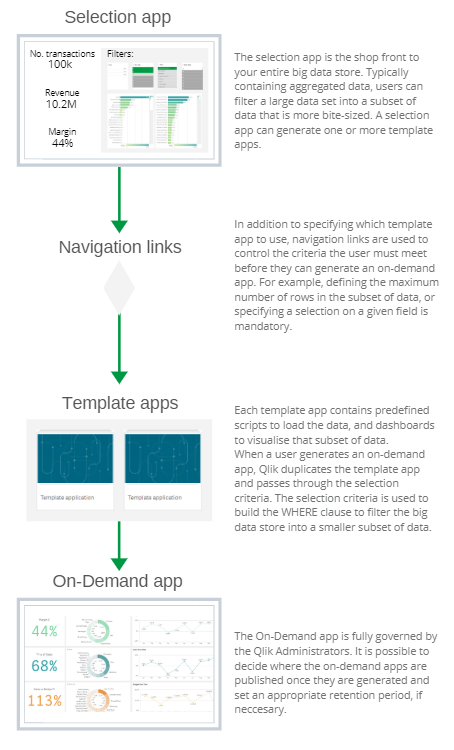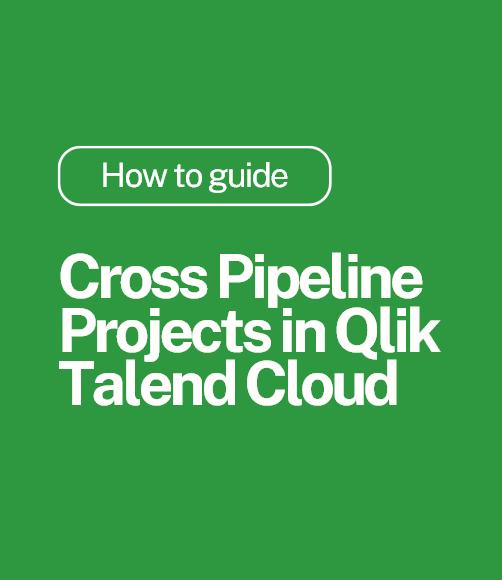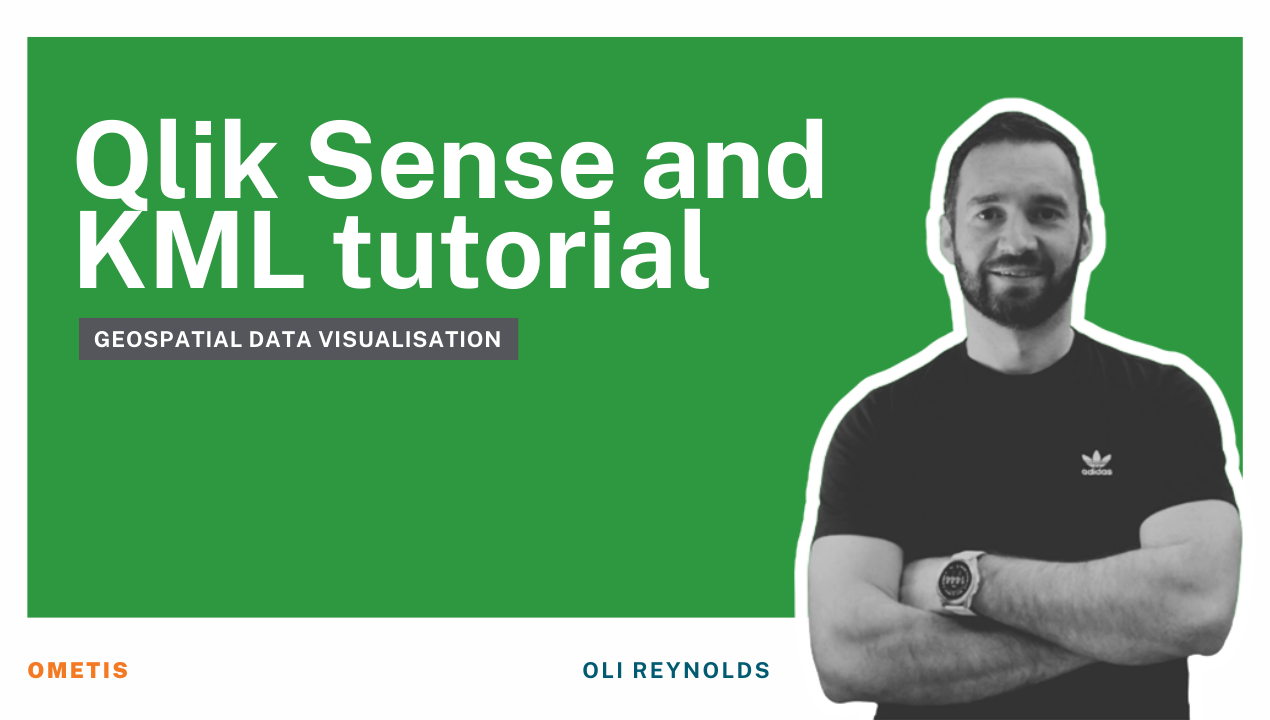Introduction to Qlik Sense ODAG: On-Demand App Generation
ODAG (On-Demand App Generation) is a solution in Qlik Sense to manage big data sets, ensuring ALL data is discoverable.
In a nutshell, all data is made readily available to users, initially in a ‘selection app’. This selection app is a shop front to your organisations big data store. This app will contain an aggregated view of the data. Once the user has made their selections and filtered the data into a more palatable size, specified by Qlik developers/IT, the user is permitted to generate an on-demand app.
The on-demand application is based on a predefined script and a collection of sheets (dashboards), called a template app. On creation of the on-demand app, Qlik passes through the selection state which builds the respective WHERE clause to filter the big data store into a smaller subset of data. To better explain let me illustrate this to you:

The on-demand application enables users to work with data at the lowest level of granularity (unaggregated on load), enabling them to slice and dice the data as they please, and while maintaining governance over that data. For these reasons, it is favoured by both IT and business users alike.
Here’s a summary about why:
- Enables users to interactively shop for a subset of data they need to analyse.
- Enables analysis of large data sets that have no reliable date/unique record number field for performing incremental reloads.
- Enables IT to govern the data and apps; data volumes, retention period, publication of on-demand apps, where reloads take place in multi-node environments and maintain row and column-level security (section access).
- Ensure full Qlik Sense functionality that is hosted in memory, for quick calculation times.
- On-the-fly, customisable, script generation.
If you want to talk more about your Qlik implementation, and how ODAG (On-Demand App Generation) could help manage your big data be sure to get in touch.
As always, if you like what you read please click the like button on your preferred social platform and/or write a comment.
By Chris Lofthouse
Follow @clofthouse89
Topic: Data analytics





Comments